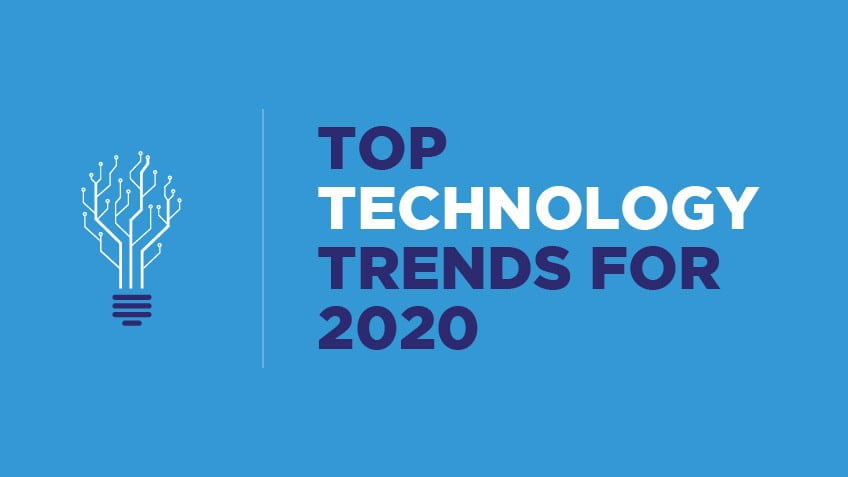
31 Jan Top Tech Trends To Watch In 2020
Every year, a handful of themes drive deal making. This year’s innovations are in the logistics, construction, retail and electric vehicle segments.
By Mergermarket’s Technology, Media and Telecommunications staff
1. Logistics embraces digitization
The traditionally staid supply chain and logistics industry will speed up its drive to digitize, turning to autonomous drones, robotics, artificial intelligence, blockchain, the Internet of Things (IoT) and data analytics to ensure faster deliveries at lower rates. Classic logistics heavyweights Deutsche Post’s DHL and C.H. Robinson are pouring millions of dollars into such technology. Oracle and SAP, which already do supply chain work, likely will make acquisitions in the area to improve their capabilities.
The disruptors to watch in freight forwarding include Flexport, which raised a $1 billion round led by Softbank Vision Fund last February, and Arrive Logistics, which raised $25 million in June. Others to watch are Cloudleaf, Polte and SenseGiz, which offer IoT services and sensors for shippers to improve visibility throughout the supply chain. FourKites uses machine learning and data analytics for more efficient deliveries. Others innovating in delivery are Dispatch, which offers an Uber-like service connecting businesses with drivers, and Zipline, whose autonomous drones deliver medical supplies to remote areas.
by Kyle LaHucik and Liying Qian
2. Retail sees technology rebirth
Technology has been killing the retail industry. 2020 may be the year it saves it.
Artificial intelligence, computer vision, deep-learning algorithms, digital cameras and sensor fusion will reshape brick-and-mortar stores and drive new efficiencies for shoppers and retailers.
Emboldened by the proliferation of Amazon’s cashless, cashier-free Go stores, startups to watch include Veeve, with a “smart shopping cart” that automatically identifies items dropped into its basket, calculates the cost of produce, and notifies store managers if age verification is needed for purchases. Caper has created a similar cart using image recognition cameras and built-in weight sensors.
Focal Systems also began with a cashier-free checkout solution, but more recently has developed an automated out-of-stock detection system that in November attracted an investment from Zebra Technologies. It competes with Singapore-based Trax Retail and Bossa Nova Robotics.
by Troy Hooper
3. Construction tech builds momentum
After an innovation lull, construction technology companies are set to capitalize on labor shortages and an increase in construction projects. New technologies — including those that help manage and monitor construction projects, identify inefficiencies that lead to delays, improve safety and enhance construction equipment — are whetting investors’ appetites. Those raising venture funding last year included construction planning platform Alice Technologies, AI-powered construction tech startup Disperse, construction site software developer Fieldwire, construction software startup Built Robotics, INDUS.AI and OpenSpace.
Katerra, a technology-driven offsite construction company backed by SoftBank Vision Fund, said it expected $700 million in funding in early 2019, valuing it at more than $4 billion, The Information reported.
Furthermore, Procore Technologies, a construction project management software company, retained Goldman Sachs for a possible 2020 initial public offering that could give it $4 billion-plus valuation, Bloomberg reported in September.
The activity could lead to dealmaking this year, as software players like Oracle, Autodesk, Procore Technologies or Trimble look to consolidate. Big IoT companies like Cisco Systems, Microsoft and Siemens AG also could be suitors.
by Chris Metinko
4. Operational Technology takes control
Securing the control system for a power station or the control network for a rail system should take center stage this year.
Known as operational technology, the industrial control systems were designed decades ago, before cyber attacks were a reality. New OT cybersecurity platforms, which give industrial companies visibility, monitoring and protection of their networks, have seen a flurry of activity. On January 7, Insight Partners acquired Armis for $1.1 billion. Just last month, Tenable Holdings acquired Indegy for $78 million in cash. In September, Palo Alto Networks acquired IoT security developer Zingbox for $75 million. In November 2018, ForeScout Technologies bought The IoT and OT security company SecurityMatters for $133 million. That deal was followed by Dragos acquiring NexDefense, a provider of industrial control systems technology.
Other startups have expressed interest in raising money, including Claroty, Verve Industrial Protection, Nozomi Networks and SCADAfence.
Logical acquirers in the space could include cybersecurity players such as Palo Alto Networks and Cisco Systems, private equity firms and large manufacturers, as well as giant OT companies like Siemens, General Electric or Rockwell.
by Chris Metinko
5. Alternative data drives financial services
Investors and hedge funds are looking beyond financial statements for a competitive edge. They’re harnessing “alternative data” from job listings, social media posts and satellite images to foot traffic at stores and the flight paths of corporate jets. Thanks to artificial intelligence, machine learning and natural language processing, these vast pools of data are easier to search and more accurate in predicting trends. Alternative data startups include AlphaSense, BattleFin and Ireland-based Eagle Alpha. Others are UK-based Neudata, Thinknum and Truvalue Labs, which scrapes information from international news reports, think tanks, industry analysts and NGOs to gauge performance related to environmental, social and governance criteria. Potential acquirers of such businesses include FactSet Research Systems, Institutional Shareholder Services (ISS), Morningstar, MSCI, Bloomberg, as well as exchanges like Nasdaq and rating agencies like S&P.
by Yizhu Wang
6. 5G rollout gets telcos buzzing
Despite the promise of 5G networking technology — dramatically faster connectivity for smart machines, autonomous driving and media consumption — the U.S. has lagged behind China, South Korea and the UK in deploying the technology.
Huawei and chipmakers Qualcomm and Samsung could develop 5G-capable gear via acquisitions, say industry sources.This may soon change as Verizon, AT&T, T-Mobile and Sprint promise more comprehensive rollouts of the technology they piloted in late 2018. Indeed, T-Mobile has used 5G to argue in favor of its $26.5 billion acquisition of Sprint. Companies like Movandi, MilliLabs, GenXComm, and JMA Wireless are all examples of smaller networking players. Potential targets offering 5G home internet include Common Networks and Starry.
by Thomas Zadvydas and Kyle LaHucik
7. New semiconductor tech to power up electric vehicles
Two new semiconductor technologies are driving change in the electric vehicle battery market. Historically, EV batteries have been costly, large and inefficient. Now, Gallium nitride (GaN) and silicon carbide (SiC) are changing that, allowing for smaller, more efficient semiconductors that can operate at higher voltages than traditional silicon wafers. Tesla’s decision to include SiC transistors in its Model 3 was a big milestone for the industry.
Among the most mature GaN startups are GaN Systems and Navitas Semiconductor. Other promising startups include Odyssey Semiconductor, VisIC Technologies, Efficient Power Conversion (EPC) and Transphorm, in which KKR is an investor. Cree is the largest pure-play SiC company. Smaller SiC companies include GeneSiC Semiconductor, United Silicon Carbide and GT Advanced Technologies. Likely buyers of such companies include power semiconductor device players such as STMicroelectronics, Infineon Technologies, ON Semiconductor and Mitsubishi Electric. Other big players – such as Panasonic, ON Semiconductor, Texas Instruments and SanKen Electric – have been developing their own GaN switching transistors but may switch gears with an acquisition.
by Mark Andress and Hana Askren
8. Self-driving shakeout expected
LiDAR startups developing sensors for self-driving cars are expected to undergo a shakeout as the technology has struggled to live up to its early promise.
By some estimates, more than 50 such startups exist. LiDAR, short for Light Detection and Ranging, uses light lasers that bounce off objects to create a three-dimensional representation of a vehicle’s surroundings. Some of these startups will be targeted by automakers and Tier 1 suppliers; others will run out of money.
A leader in the space is Velodyne LiDAR, which is expected to raise capital on the public markets via an IPO this year. Quanergy Systems — another high-profile name — has been looking to raise more than $50 million in private funding. Others that have told Mergermarket they were looking for or will need more money include AEye; Cepton Technologies; Innovusion; LeddarTech; LeiShen Intelligent System and SOS Lab.
Tier 1 suppliers like Aptiv, Continental, Hyundai Mobis, Bosch and ZF Friedrichshafen are viewed as likely investors or acquirers.
by Mark Andress
Source: https://www.forbes.com/sites/mergermarket/2020/01/23/top-tech-trends-to-watch-in-2020/#5a4fe3474d1f

